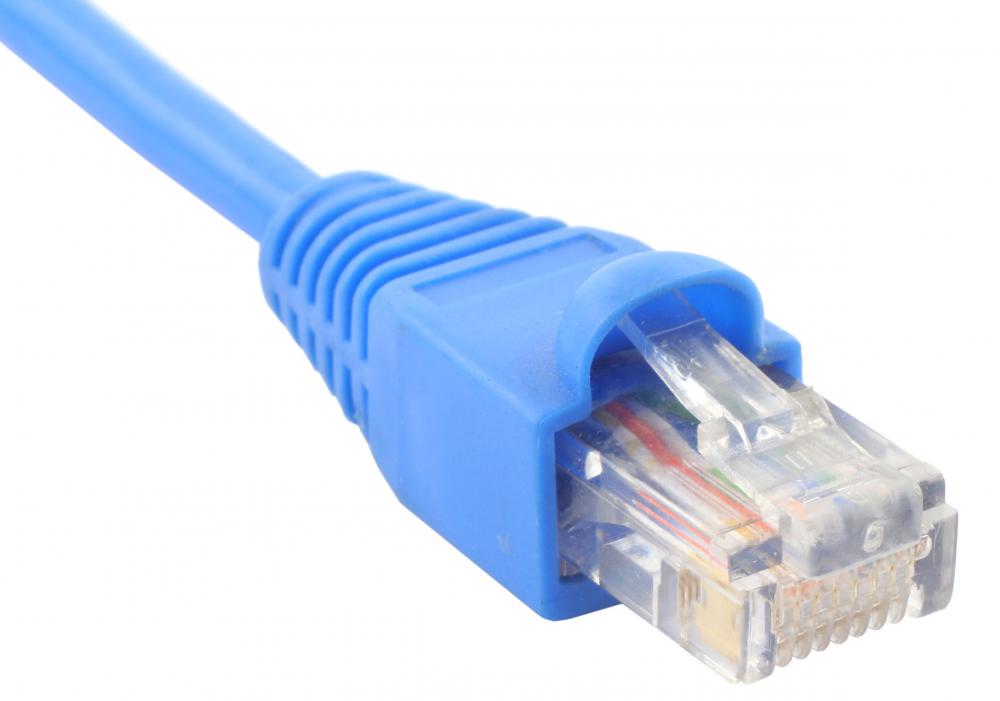Security across all network ports should include defense-in-depth. Close any ports you don't use, use host-based firewalls on every host, run a network-based next-generation firewall, and monitor and filter port traffic, says Norby. Do regular port scans as part of pen tests to ensure there are no unchecked vulnerabilities on any port. Pay particular attention to SOCKS proxies or any other service you did not set up. Patch and harden any device, software, or service connected to the port until there are no dents in your networked assets' armor. Be proactive as new vulnerabilities appear in old and new software that attackers can reach via network ports.
The solution comes from network security applications that perform active port scanning and banner grabbing in order to determine open ports, and the applications / services behind them. Such solutions give instant visibility into the security of your server from the outsider's perspective, by mimicking attacker's behavior. Some solutions gather extended information about the applications and services behind open ports, and also point out potential vulnerabilities which may be exploited. Also known as filtered or dropped, this involves neither acknowledging the request nor sending a reply. No response indicates to the port scanner that a firewall likely filtered the request packet, that the port is blocked or that there is no port there. For example, if a port is blocked or in stealth mode, a firewall will not respond to the port scanner.
Interestingly, blocked ports violate TCP/IP rules of conduct, and therefore, a firewall has to suppress the computer's closed port replies. Security teams may even find that the corporate firewall has not blocked all the network ports. For example, if port 113, used by Identification Protocol, is completely blocked, connections to some remote internet servers, such as Internet Relay Chat, may be delayed or denied altogether. For this reason, many firewall rules set port 113 to closed instead of blocking it completely.
Some services or applications running on open ports may have poorly configured default settings or poorly configured running policies. Such applications may be the target of dictionary attacks, and, with poorly configured password policies, for example, attackers can identify credentials used by legitimate users. Furthermore, attackers can use the credentials to log into such applications, steal data, access the system, cause downtime or take control of the computer.
Scanning tools used by both attackers and security professionals allow an automated detection of open ports. Many network-based IDS/IPS solutions, and even workstation-based endpoint security solutions can detect port scanning. It is worthwhile to investigate port scanning originating from inside the local network, as it often means a compromised device.
However, computers running some security solutions can generate false positives. This is beacause vendors of security solutions feature a port scanner to detect vulnerable devices inside a home network. A port scan is a series of messages sent by someone to learn which computer network services a given computer provides. Port scanners are applications that identify which ports and services are open or closed on an internet-connected device. A port scanner can send a connection request to the target computer on all 65,536 ports and record which ports respond and how. The types of responses received from the ports indicate whether they are in use or not.
These cybercriminals often use port scanning as a preliminary step when targeting networks. They use the port scan to scope out the security levels of various organizations and determine who has a strong firewall and who may have a vulnerable server or network. A number of TCP protocol techniques actually make it possible for attackers to conceal their network location and use "decoy traffic" to perform port scans without revealing any network address to the target. To conduct a port scan, one must first have a list of active hosts. A network scan is the process of discovering all of the active hosts on a network and mapping those hosts to their IP addresses. With a list of active hosts, a port scan, the process of sending packets to specific ports on a host and analyzing the responses to learn details about its running services or identify potential vulnerabilities, can be conducted.
A port scanner is an application designed to probe a server or host for open ports. Such an application may be used by administrators to verify security policies of their networks and by attackers to identify network services running on a host and exploit vulnerabilities. Insecure Servers – Servers are very complex, running many different applications and services, and typically are exposed to the Internet. Even secure open ports can potentially be abused or provide information about the system to attackers.
Login Portal - Vulnerabilities may exist in the Login portal which would give direct access to users' data. A common attack is to inject SQL commands into the username field to 'trick' the server into allowing the login attempt. Typically login portals accept input from the public Internet which allows for unexpected input values from attackers . These unexpected input values may interfere with the servers' processing, leading to a compromise. Other attacks exist as well, such as session replay attacks and attacks against SSL . Insecure code here can lead to full access to the site if the compromised user account is of an administrator level or if the vulnerability is severe enough to allow remote code execution.
Catastrophes, with the features of high negative impact and low frequency, are causing increasing losses to the human society due to the increasing exposure and vulnerability. Seaports are critical lifeline infrastructures in coastal cities and are at the same time vulnerable to both natural and man-made catastrophes, such as typhoon, earthquake, fire, and explosion. Any disruptions to a seaport will have a direct impact on the supply chain where the port lies and have a second order or even a third order propagation to the industrial clusters in the hinterland. Therefore, to fill the gap, this study firstly identifies the major port catastrophic hazards by literature review. By using Tianjin Port Explosion in 2015 as the case study, vulnerability estimates of the four port sub-systems as well as the whole port system in two assessment periods are obtained.
It is found that the storage system is the most vulnerable subsystem after the explosion, while the vulnerability condition of the loading and unloading system improves the most after the first round of port recovery. Further, port vulnerability assessment against repetitive catastrophes is conducted by using the developed port operation simulation-based model. The relationship between catastrophe magnitude and port loss is revealed by quantifying decreased port throughput and physical damages. The typhoon hazard and the Port of Shenzhen, China is selected as the case study.
It is estimated that a worst-case scenario typhoon attack could cause a total loss of 0.91 USD billion in the studied terminal, which is approximately three times the terminal net profit in 2015. Finally, the research takes a further step in considering the hinterland industrial clusters into the research scope. VIII Propagation of port vulnerability to hinterland industrial clusters is evaluated by an original three-layer port-cargo-industrial cluster model. The key seaports and industrial clusters in Guangdong province, China as well as the typhoon hazard are used as examples. Unnecessary ports left listening on the network may be forgotten about and present a security risk. Even if the server is behind a Firewall, other systems on the same network could easily access these insecure ports.
A compromised system on the same network could scan the network and attempt brute force attacks against any insecure ports that it finds. This is one way attackers can gain further access to IT infrastructure. The Firewall's protection may also inadvertently be turned off temporarily during maintenance or reconfiguration, leaving insecure ports vulnerable.
Open ports are used by applications and services and, as any piece of code, they may have vulnerabilities or bugs. The more applications and services run using open ports for Internet communication, the higher the risk of one of them having a vulnerability that can be exploited. A bug in one service reachable from the outside may cause it to crash.
Such a crash may lead to execution of arbitrary code on the affected machine, exactly what the attacker needs in order to be successful. The goal behind port and network scanning is to identify the organization of IP addresses, hosts, and ports to properly determine open or vulnerable server locations and diagnose security levels. Both network and port scanning can reveal the presence of security measures in place such as a firewall between the server and the user's device. Port also used by B2 trojan.16tcptrojanPremium scanSkun16udpapplicationsnot scannedObserver is vulnerable to a denial of service, caused by a NULL pointer dereference when copying an octet string from a variable binding list.
By sending a specially-crafted SNMP SetRequest PDU sent to UDP port 16, a remote attacker could exploit this vulnerability to cause the application to crash. Eternal Blue is a vulnerability that occurs when the SMB service of Windows processes SMB v1 requests. This vulnerability causes an attacker to execute arbitrary code on the target system.
Through the eternal blue vulnerability, it will scan the Windows machine that opens the 445 file sharing port. As long as the computer is turned on, the criminals can implant malicious software such as ransomware, remote control Trojan horses, and virtual currency mining machines into the computer and server. Rather than using the operating system's network functions, the port scanner generates raw IP packets itself, and monitors for responses. This scan type is also known as "half-open scanning", because it never actually opens a full TCP connection.
If the target port is open, it will respond with a SYN-ACK packet. The scanner host responds with an RST packet, closing the connection before the handshake is completed. If the port is closed but unfiltered, the target will instantly respond with an RST packet. Every logical port is subject to a threat to a system, but some of the commonly used ports receive a lot of attention from cybercriminals. Cybercriminals use vulnerability scanners and port scanning techniques for identifying opened ports on any system or server.
Next, they can identify what kind of services are running and the kind of system being used by the target victim. Here's the list of potential logical ports that are the targets of cybercriminals. It is impossible to prevent the act of port scanning; anyone can select an IP address and scan it for open ports. To properly protect an enterprise network, security teams should find out what attackers would discover during a port scan of their network by running their own scan.
Be aware, however, that security assessments and pen tests against many cloud hosting services, such as AWS, need approval prior to scanning. NJStar Communicator is vulnerable to a stack-based buffer overflow, caused by improper bounds checking by the MiniSMTP server when processing packets. By sending a specially-crafted request to TCP port 25, a remote attacker could overflow a buffer and execute arbitrary code on the system or cause the application to crash.
How To Check Port Vulnerability
RUCKUS could allow a remote attacker to bypass security restrictions. An unauthenticated remote attacker with network access to port 22 can tunnel random TCP traffic to other hosts on the network via Ruckus devices. A remote attacker could exploit this vulnerability to bypass security restrictions and gain unauthorized access to the vulnerable application. The use of raw networking has several advantages, giving the scanner full control of the packets sent and the timeout for responses, and allowing detailed reporting of the responses. There is debate over which scan is less intrusive on the target host.
SYN scan has the advantage that the individual services never actually receive a connection. However, the RST during the handshake can cause problems for some network stacks, in particular simple devices like printers. Port scanning is one of the most popular information-gathering methods used by malicious actors. Part of the reconnaissance process, an attacker can use the data collected by a port scan to find out what services a device is running and to get an idea of the OS being used. This data can then be used to flag vulnerable systems with the intention of exploiting them to gain access to the network.
The crash of the unused NTP service causes system instability and may bring down an entire server. Thus, an attacker can perform successful denial of service attacks on a web server, without even targeting port 80. Behind open ports, there are applications and services listening for inbound packets, waiting for connections from the outside, in order to perform their jobs. Security best practices imply the use of a firewall system that controls which ports are opened or closed on Internet-facing servers. Additionally, security best practices advise that ports should be open only on a "need-to-be" basis, dictated by the Internet communication needs of applications and services that run on the servers. As port scanning is an older technique, it requires security changes and up-to-date threat intelligence because protocols and security tools are evolving daily.
As a best practice approach, port scan alerts and firewalls should be used to monitor traffic to your ports and ensure malicious attackers do not detect potential opportunities for unauthorized entry into your network. In fact, the host discovery element in network scanning is often the first step used by attackers before they execute an attack. One of the easiest ways for cybercriminals to gain access to an organization's devices is through open ports. System administrators and security professionals run port scans as part of vulnerability scans to identify such open ports and avoid any kind of intrusion.
In this blog, we'll take a deep dive into the various aspects of port scanning and the role it plays in vulnerability scanning. Now let's conclude the above tutorial, in this tutorial you learned how to write a Python script to check the Port vulnerability. You can look out for more vulnerable ports banners or services in google and add them in your txt file for a better result. An alternative approach is to send application-specific UDP packets, hoping to generate an application layer response. For example, sending a DNS query to port 53 will result in a response, if a DNS server is present. However, it is limited to scanning ports for which an application specific probe packet is available.
Some tools (e.g., nmap) generally have probes for less than 20 UDP services, while some commercial tools have as many as 70. In some cases, a service may be listening on the port, but configured not to respond to the particular probe packet. All forms of port scanning rely on the assumption that the targeted host is compliant with RFC Transmission Control Protocol. Although this is the case most of the time, there is still a chance a host might send back strange packets or even generate false positives when the TCP/IP stack of the host is non-RFC-compliant or has been altered.
This is especially true for less common scan techniques that are OS-dependent . The TCP/IP stack fingerprinting method also relies on these types of different network responses from a specific stimulus to guess the type of the operating system the host is running. Firewalls and intrusion detections systems should always be configured to spot and block unusual connection attempts and requests.
For example, after a port scan has been completed, attackers may launch a few probing attacks to validate earlier research or to gain additional information needed to finesse their main attack. Feeding abnormal activity into a SIEM system can provide real-time feedback and improve automated responses to events. Most security appliances can link ongoing repeated scan attempts from the same source whether they target a single host or multiple hosts. To be effective, port scan attacks may need to probe many different ports on many different systems over a relatively short time period, which makes the attempts easier to detect. To counter this, some attackers may find it preferable to probe for open ports over a much longer time frame, in which case it becomes more difficult to detect a port scan attack. The downside for the attacker, however, is that it may take hours, days or longer to find a vulnerable system.
As both scans continue to be used as key tools for attackers, the results of network and port scanning can provide important indications of network security levels for IT administrators trying to keep networks safe from attacks. UDP scanning is also possible, although there are technical challenges. UDP is a connectionless protocol so there is no equivalent to a TCP SYN packet. However, if a UDP packet is sent to a port that is not open, the system will respond with an ICMP port unreachable message. Most UDP port scanners use this scanning method, and use the absence of a response to infer that a port is open.
However, if a port is blocked by a firewall, this method will falsely report that the port is open. If the port unreachable message is blocked, all ports will appear open. The most common type of scan is a SYN scan , named for the TCP SYN flag, which appears in the TCP connection sequence or handshake. This type of scan begins by sending a SYN packet to a destination port. The target receives the SYN packet and responds with a SYN/ACK response if the port is open or an RST if the port is closed.





























No comments:
Post a Comment
Note: Only a member of this blog may post a comment.